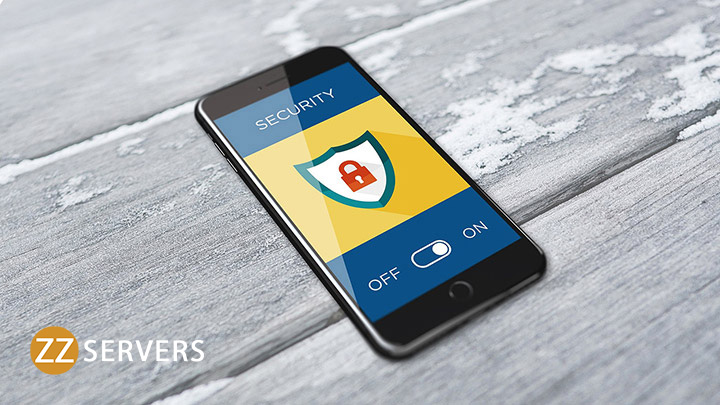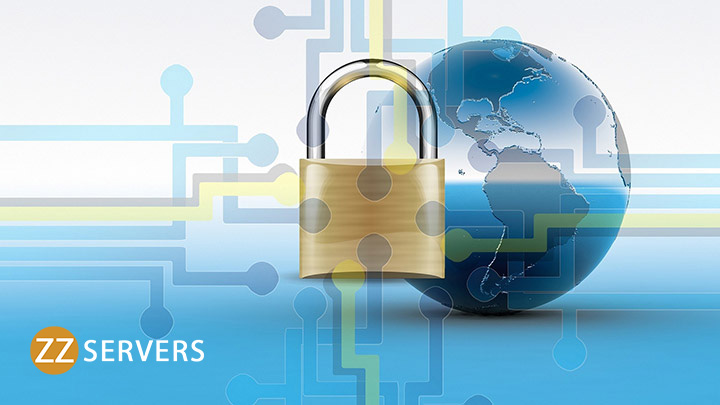Network security is paramount for organizations aiming to protect their sensitive data and digital assets in an era dominated by digital connectivity. A critical component of ensuring robust network security is conducting regular audits to identify vulnerabilities and weaknesses that malicious actors could exploit. This comprehensive guide explores the top network security audit tools, delving into their features, capabilities, and how they contribute to fortifying digital fortresses against cyber threats.
As the digital landscape evolves, so do the tactics of cyber threats. Network security audits are crucial in identifying and mitigating vulnerabilities within an organization’s network infrastructure. These audits systematically examine security policies, configurations, and architecture to ensure a resilient defense against potential cyber-attacks. Leveraging network security audit tools is essential for organizations seeking a proactive approach to safeguarding their digital assets.
The Importance of Network Security Audits

Network security is essential for any organization to protect its systems and data from ever-evolving cyber threats. Regular audits help strengthen an organization’s security posture. Conducting thorough audits on a scheduled basis allows you to identify issues and take proactive steps to remedy vulnerabilities. Some of the key benefits of network security audits include:
- Identifying vulnerabilities within your network infrastructure like misconfigurations, outdated software or potential entry points. This allows you to shore up any weaknesses.
- Ensuring compliance with relevant industry regulations and standards for organizations in regulated sectors like healthcare or financial services. Audits help validate adherence to mandates.
- Mitigating risks from cyber threats by addressing vulnerabilities that malicious actors may exploit. Limiting exposure can reduce successful attacks.
- Optimizing your overall security over time through continuous evaluation and implementing best practices as they emerge. Audits are an investment in evolving your defenses.
Taking a proactive approach to network security through regular audits can pay dividends in risk management and compliance. Staying ahead of threats requires ongoing diligence – audits are an important part of maintaining a robust security posture.
Top 5 Network Security Audit Tools
1- Nessus
As one of the most widely used vulnerability scanners, Nessus offers robust scanning abilities. It thoroughly identifies vulnerabilities, misconfigurations and outdated assets across networked devices. Nessus’ extensive plugin database stays up-to-date on the latest issues. Regular scans with Nessus are crucial for remediating weaknesses before threats can exploit them.
2- Nmap
Nmap has earned its reputation as a powerful and flexible network mapper. Its primary functions involve host discovery, service/version detection and operating system identification through active port scanning. These mapping capabilities provide valuable insight into your network topology and assets. Nmap also has a strong scripting component, allowing for customizable scans.
3- Wireshark
While not strictly a vulnerability scanner, Wireshark plays an important role in network security audits. Its deep packet inspection and analysis capabilities make it highly effective for troubleshooting network issues, spotting anomalies and gaining forensic data. Wireshark can scrutinize network traffic in real time, helping uncover irregular patterns that warrant further investigation.
4- OpenVAS
OpenVAS takes vulnerability scanning a step further with its comprehensive assessment functions. Built on a large database of known vulnerabilities, it performs methodical scans for identifying exposed risks across IP addresses, ports, services and applications. OpenVAS finds flaws that need remediation through configuration changes, software updates or other corrective actions.
5- Snort
As an open-source intrusion prevention and detection tool, Snort monitors network activity around the clock for malicious behavior. Its rule-based detection engine and real-time traffic analysis help identify intrusion attempts and data breaches. Snort also aids in investigating past incidents through its logging of events. Active monitoring with Snort between audits strengthens a layered defense approach.
How Network Security Audit Tools Work

Network security audit tools employ various techniques to assess the security of an organization’s network infrastructure. These techniques include:
- Vulnerability Scanning: Network security tools conduct automated scans to identify system, device, and network configuration vulnerabilities. These scans often include checks for outdated software, misconfigurations, and known security vulnerabilities.
- Packet Inspection: Tools like Wireshark capture and analyze data packets flowing through the network. Packet inspection allows for identifying unusual or suspicious network activity, including unauthorized access attempts and data exfiltration.
- Configuration Auditing: Some tools focus on auditing the configuration settings of network devices such as routers, switches, and firewalls. It ensures that devices are configured securely, minimizing the risk of unauthorized access or misconfigurations.
- Wireless Network Assessment: Tools like Aircrack-ng specialize in assessing the security of wireless networks. They can identify weak encryption protocols, detect unauthorized access points, and assess the overall security posture of Wi-Fi networks.
- Intrusion Detection: Network security tools with intrusion detection capabilities monitor network traffic for signs of malicious activity. They use predefined rules or behavioral analysis to identify potential security threats and alert administrators.
Integrating Network Security Audits into Cybersecurity Frameworks
Network security audits should be integral to an organization’s cybersecurity framework. Here’s how they fit into common cybersecurity frameworks:
- NIST Cybersecurity Framework: Network security audits align with NIST’s Identify, Protect, Detect, Respond, and Recover functions. They contribute to identifying vulnerabilities, protecting against potential threats, and detecting and responding to security incidents.
- ISO/IEC 27001: Within the ISO/IEC 27001 framework, network security audits contribute to establishing, implementing, maintaining, and continually improving an organization’s information security management system (ISMS).
- CIS Critical Security Controls: Network security audits align with several CIS Critical Security Controls controls, including continuous vulnerability assessment, secure configuration, and wireless access control.
- COBIT (Control Objectives for Information and Related Technologies): Network security audits support COBIT’s framework by helping organizations achieve strategic alignment, value delivery, risk management, resource management, and performance measurement.
Choosing the Right Network Security Audit Tool
When selecting a network security audit tool, consider the following factors:
- Scope and Coverage: Ensure the tool covers the scope of your network infrastructure and provides comprehensive coverage for various vulnerabilities and security aspects.
- Ease of Use: Choose a tool with an intuitive interface and user-friendly features to facilitate efficient use by security professionals and network administrators.
- Integration Capabilities: Look for tools seamlessly integrating with your existing cybersecurity infrastructure, including SIEM (Security Information and Event Management) systems and other security tools.
- Scalability: Consider the tool’s scalability to accommodate the size and complexity of your organization’s network, ensuring it can adapt to growth and evolving security needs.
- Compliance Support: If your organization operates within a regulated industry, ensure the tool provides features that support compliance with industry-specific regulations and standards.
Challenges and Best Practices in Network Security Auditing
Challenges in Network Security Auditing
The modern network landscape presents several challenges for auditing efforts. As networks grow more complex, conducting thorough assessments requires careful planning and coordination.
- Complexity of Networks: Today’s networks incorporate diverse technologies like cloud infrastructure, IoT devices and remote access points. This complexity expands the attack surface and makes audits more demanding. Comprehensively evaluating hybrid environments with traditional and new-age assets poses unique challenges in achieving complete visibility.
- The volume of Dat: Networks today generates massive amounts of traffic data that security teams must sift through to identify issues. With petabytes of logs, determining high-priority vulnerabilities amidst normal traffic patterns is an obstacle. Auditors require efficient prioritization approaches to focus audit activities productively.
- Dynamic Threat Landscape: Cyber threats evolve constantly with new exploitation techniques and tools. This dynamism demands network security audits evolve in tandem to uncover emerging risks. Audit methodologies and tools require ongoing refinements to address the shifting threat landscape and spot novel vulnerabilities proactively.
Best Practices in Network Security Auditing
To overcome these challenges, certain best practices can help organizations optimize their audit processes. Adopting a proactive stance and leveraging automation enables keeping pace with network changes and threats.
- Regular Updates and Scanning: Network security tools must receive timely updates on the latest vulnerabilities and threats. Additionally, networks should undergo scheduled scans, whether daily, weekly or monthly, to identify new weaknesses before exploitation. This practice maintains up-to-date visibility.
- Collaboration Between Teams: When audits find issues, network security, system administration and IT teams must collaborate swiftly on remediation. Coordinated efforts to accelerate the resolution of vulnerabilities across diverse stakeholders.
- Continuous Monitoring: Deploying tools that enable ongoing monitoring of network traffic aids early detection of intrusions or policy violations. This facilitates rapid response to security incidents, minimizing potential damage from breaches.
- Automation of Routine Tasks: Processes like vulnerability scanning and configuration audits can consume significant resources when done manually at scale. Automating repetitive tasks streamlines operations and ensures consistency in coverage, freeing up teams for more strategic functions.
Take the Next Step to Fortify Your Network Security
To learn more about how ZZ Servers can help your organization strengthen its network security posture through comprehensive audits and the implementation of top network security audit tools, contact our team of experts today. With over 17 years of experience delivering tailored IT and cybersecurity solutions, our professionals can evaluate your unique environment, infrastructure and compliance needs. We’ll then develop a customized audit strategy leveraging the right tools to identify vulnerabilities and proactively defend your network. Take your organization’s security seriously – rely on ZZ Servers’ proven approach. Call 800-796-3574.
Conclusion
Network security audits are indispensable for organizations striving to maintain a robust defense against evolving cyber threats. The top network security audit tools discussed in this guide offer a range of features and capabilities to meet the diverse needs of modern enterprises. By integrating these tools into cybersecurity frameworks, organizations can proactively identify and address vulnerabilities, ultimately safeguarding their digital fortresses in an ever-changing digital landscape. Choose the right network security audit tool, follow best practices, and stay vigilant to ensure the security of your organization’s network infrastructure.
Frequently Asked Questions
What types of vulnerabilities can these tools detect?
Network security audit tools can detect many vulnerabilities, including outdated and unpatched software, improper configurations, known vulnerabilities in protocols and services, malware infections, and suspicious network activity. The specific checks are defined by each tool’s database of vulnerability definitions and the analysis techniques used during scanning and monitoring.
How accurate are the results?
Leading network security audit tools typically detect around 70-90% of vulnerabilities when run against systems properly configured for scanning. Accuracy depends on factors like how up-to-date vulnerability definitions are kept. Regular rescans help tools improve over time. It’s also best practice to verify high-priority results through alternative methods to reduce false positives.
Can these tools support compliance needs?
Yes, network security audit tools can demonstrate adherence to compliance requirements for identifying, monitoring and addressing vulnerabilities. Features like reports, alerts, dashboards and documentation of findings provide artifacts validating due diligence for frameworks like NIST, ISO 27001, PCI DSS and more. Proper configuration ensures results map directly to applicable controls.
How do they integrate with other systems?
Many tools integrate tightly into security infrastructure through APIs and plugins. It allows centralizing results, correlating with logs/events and automating workflows. For example, vulnerabilities can automatically create tickets in SIEM/ticketing systems. Scanning policies and schedules can also be configured centrally for multiple tools.
What skills are required to use these tools?
While security expertise optimizes use, most tools are designed for usability. Basic configuration and interpretation of results require an understanding of network architectures. Tool-specific training covers interfaces and customization options. That said, experience with security best practices helps validate and prioritize results. Overall, network and security teams can adopt these tools effectively.


